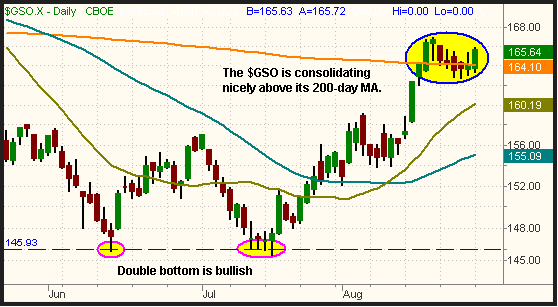Yesterday was a bullish accumulation day
After several days of indecisive and
directionless trading, the major indices trended solidly higher
yesterday. Volume picked up a bit as well. The S&P 500 and Dow Jones Industrial
Average gained 0.5% and 0.6% respectively, while the Nasdaq Composite rallied
1.0%. The small-cap Russell 2000 advanced 1.1% and the S&P Midcap 400 closed
0.8% higher. A bit of selling pressure in the late afternoon caused stocks to
finish off their intraday highs, but the broad market held on to most of its
gains. It was also a welcome change that each of the major indices keep pace
with one another, as none of the indices lagged significantly behind.
Turnover was higher in both exchanges yesterday, causing both
the S&P 500 and Nasdaq Composite to register bullish “accumulation days.” Total
volume in the NYSE increased by 10%, while volume in the Nasdaq was 7% higher
than the previous day’s level. Unfortunately, volume levels still came in below
average, but the broad-based gains on higher volume is a good start. Market
internals were firmly positive as well. In the Nasdaq, advancing volume exceeded
declining volume by a margin of more than 4 to 1. The NYSE spread was positive
by nearly 5 to 2.
We’ve been focused extensively on the performance of the
Semiconductor Index ($SOX) recent days because the sector tends to lead the
Nasdaq, and hence the broad market. However, one tech-related sector that has
been showing more relative strength and a better chart pattern than the $SOX is
the Software Index ($GSO). When the broad market correction began in May, both
sectors sold off sharply, but the $GSO found support in mid-June. The $SOX,
however, continued lower. In the beginning of July, the $GSO began trending
lower again, but the index held its prior low from the previous month and formed
a double bottom. Meanwhile, the $SOX fell another ten percent below its June
low. Presently, the $SOX remains more than 20% below its 52-week high, but the $GSO
is only off by 6%. Since forming its double bottom last month, the $GSO has
moved steadily higher and closed yesterday back above resistance of its 200-day
moving average. If the index clears its August 18 high, there is a decent chance
the $GSO will recover all the way back to at least test its 52-week high that
was set in April of this year. Looking at the daily chart of the $GSO below,
notice the nice consolidation that is occurring just above the 200-day moving
average:

When comparing one sector, stock, or ETF to another, we like
to use overlay charts that compare the percentage price changes. These are line
charts that don’t show any actual prices, but instead show only a comparison of
how much an instrument has moved up or down, relative to another, within a given
period of time. If you overlay the $SOX with the $GSO, you will quickly spot the
relative strength the $GSO has been exhibiting. Since May 1, the $GSO index has
lost 3.9%, but the $SOX has fallen more than 14% during the same period:

If volume returns and the market breaks out, the Software
sector will probably be one of the better performing sectors. As the ETF Roundup
shows, there are three ETFs that are comprised of software stocks: iShares
Software
(
IGV |
Quote |
Chart |
News |
PowerRating), Software HOLDR
(
SWH |
Quote |
Chart |
News |
PowerRating), and the PowerShares Dynamic
Software
(
PSJ |
Quote |
Chart |
News |
PowerRating). All currently have similar chart patterns.
Going into today, traders will likely remain on the sidelines
ahead of the minutes from the Federal Reserve Board’s August 8 monetary-policy
meeting. Scheduled to be released at 2:00 pm EDT, the minutes are likely to
generate volatility in the market. The S&P 500, Dow Jones, and Nasdaq Composite
each closed right below their respective highs of their recent consolidations,
so they could breakout from here. However, just remember that light volume in
the market often results in false moves in both directions. We continue to
recommend laying low until after the Labor Day holiday has passed.
Deron Wagner is the head trader of Morpheus
Capital Hedge Fund and founder of Morpheus Trading Group (morpheustrading.com),
which he launched in 2001. Wagner appears on his best-selling video, Sector
Trading Strategies (Marketplace Books, June 2002), and is co-author of both The
Long-Term Day Trader (Career Press, April 2000) and The After-Hours Trader
(McGraw Hill, August 2000). Past television appearances include CNBC, ABC, and
Yahoo! FinanceVision. He is also a frequent guest speaker at various trading and
financial conferences around the world. For a free trial to the full version of
The Wagner Daily or to learn about Deron’s other services, visit
morpheustrading.com or send an e-mail to deron@morpheustrading.com.
